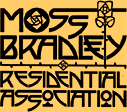by Mary Ann Armbruster
A friend offered a suggestion almost a year ago – England in August. “Quilts and Treasures of England.” What? I can hardly thread a needle to sew on a button…but wait,I don’t have to be a quilter and I don’t need to sew…I can just go and instead of the grand finale at the Birmingham Quilt Show, I can go see Pre-Raphaelites and The Staffordshire Hoard at the Birmingham Museum of Art! I can hang out with my good (quilter) friend, Melissa and visit Stratford Upon Avon, Cambridge, Bletchly Park. OK, sign me up.
We’re met at Birmingham airport by the Treasures group leader, Martha, and 21 other “mature” women, along with Collie, Martha’s husband, and Darren, the Coach driver – two very daring and patient men.
The group is excited to be in England, land steeped in history, art, music, architecture. So, first things first (after the restrooms): Cadbury’s Chocolate World. Well, ok, mildly excited about hundreds of variations on chocolate bars, including hats, teapots, animals, and any other thing you can think of, made of chocolate.
On to Stratford Upon Avon, and the beginning of ten days featuring a grand tour of English homes through the ages, plus two cathedrals, the University of Cambridge, and Bletchley Park, interspersed with rolling hills, charming villages, lots of sheep and cows, wining and dining in tea rooms and pubs and including a canal boat dinner cruise and a lavish meeting of The Pudding Club.
The homes ranged from the relatively humble Shakespeare’s birthplace and the cottage of his wife, Anne Hathaway, to Blenheim Palace, home of the Duke of Marlborough and birthplace of Winston Churchill. In between some cozier ones were the charming Hemington Grey Manor, home of children’s author, and quilter, Lucy Boston. Her daughter-in-law still lives there and gives tours and manages the garden. Another impressive cottage was Sulgrave Manor, ancestral home of George Washington built by our first President’s “5 times” Great grandfather who became wealthy in the wool business and put his home in the midst of fields of sheep.
Oxburgh Hall is a 16th century moated manor out in the middle of nowhere, filled with paintings and books, and includes a “priests hole” a very secluded hiding place for the persecuted Catholic clergy during the reign of Elizabeth I.
Two celebrations of the Pre-Raphealites and the Arts and Crafts movement are the Wightwich Manor and the William Morris childhood home at Waltenstowe which now offers an impressive exhibit of the work of Morris and his company. Wightwich is the Tudor style home of Theodore Mander, a partner in a successful family business making varnish and paint, who built it in the late 19th century for his second wife, Flora, and is full of furnishings, art and decorative elements from the Arts and Crafts movement.
Our three hour walking tour of Cambridge University was undeterred by a few morning showers. We toured the beautiful Queens’ College dining hall, resplendent with William Morris tiles and stained glass windows and tables set for a wedding reception with bouquets of white roses. We ambled about Trinity College, famous for Henry VIII and Stephen Hawking, the Walnut Court, the mathematical bridge, watched students and tourists punting on the Cam, and in the town visited the oldest church, St. Benet’s with its 1000 year old tower, and the Eagle Pub where the discoverers of DNA, Crick and Watson took nourishment daily, and where RAF and American flyers during WWII covered the ceiling with drawings and signatures, now historically “listed”, preserved by the British.
Our tour included another World War II site, Bletchley Park, the setting of the movie The Imitation Game about Alan Turing and hundreds of code breakers who worked in secret to decipher German war codes. The quiet village and countryside surroundings belie the intense work that was done in the huts of the Park. Alan Turing’s office and the Bombe machine are impressive reminders of the work done there.
Equally inspiring and impressive is the 20th century Coventry cathedral built among the ruins of the bombed out shell of the old cathedral destroyed by a German bombing raid in WWII. Our second cathedral tour was the ancient Ely Cathedral with the Octagon, a miracle of medieval engineering replacing a tower which fell in 1322. It’s on the site of the monastery founded here in 673 AD by St. Etheldreda and a blend of old architecture and modern sculpture. The Lady Chapel remains unrepaired after the damage done during the reign of Henry VIII when statues were removed, and figures in the alcoves beheaded.
Our tour ended in Birmingham where the huge
exhibition hall housed the Festival of Quilts. Even a
non-quilter could admire the beautiful work done in a huge variety of styles, colors and sizes. After a visit to the quilts which are so much more than just bed covers, I joined friends from the tour and took advantage of the very modern railroad transportation to go into the city of Birmingham and take a “Big Brum Open Top Buz” sightseeing tour, and of course, a visit to the Museum of Art and it’s amazing collection of Pre-Raphaelite paintings and the exhibit of the Staffordshire Hoard, the largest collection of Anglo-Saxon gold and silver ever discovered, found in 2009 in a field near the village of Hammerwich.
Fortunately, our trip, involving 12 hours of flights from Birmingham to Amsterdam to Detroit and back home to Peoria, went smoothly, with good weather and plenty of in-flight distractions including snacks and movies. To quote our tour leader, Martha, “We will carry home with us memories of shared experiences, new knowledge and warm friendships, all stitched together like a quilt of many colors and textures.”
